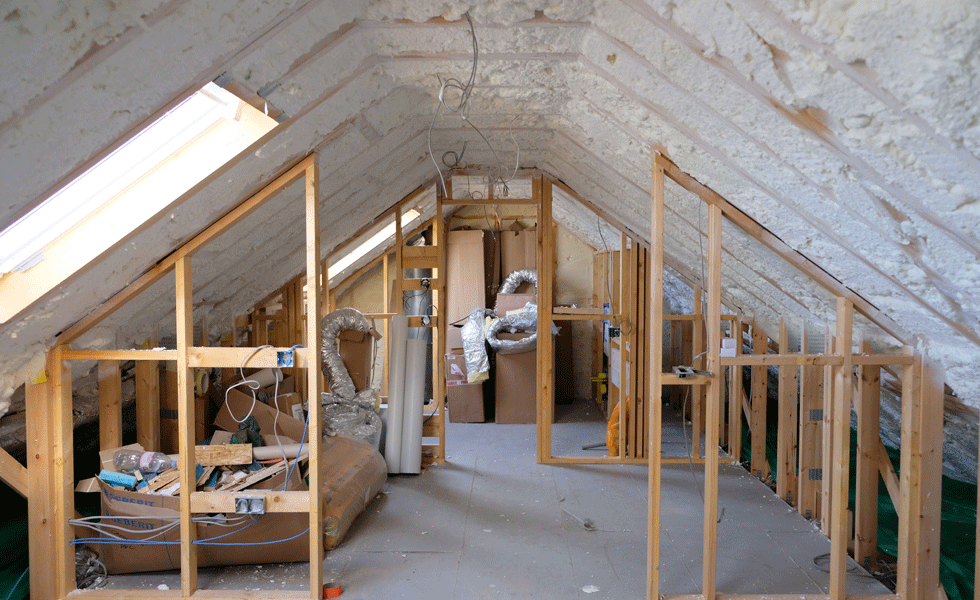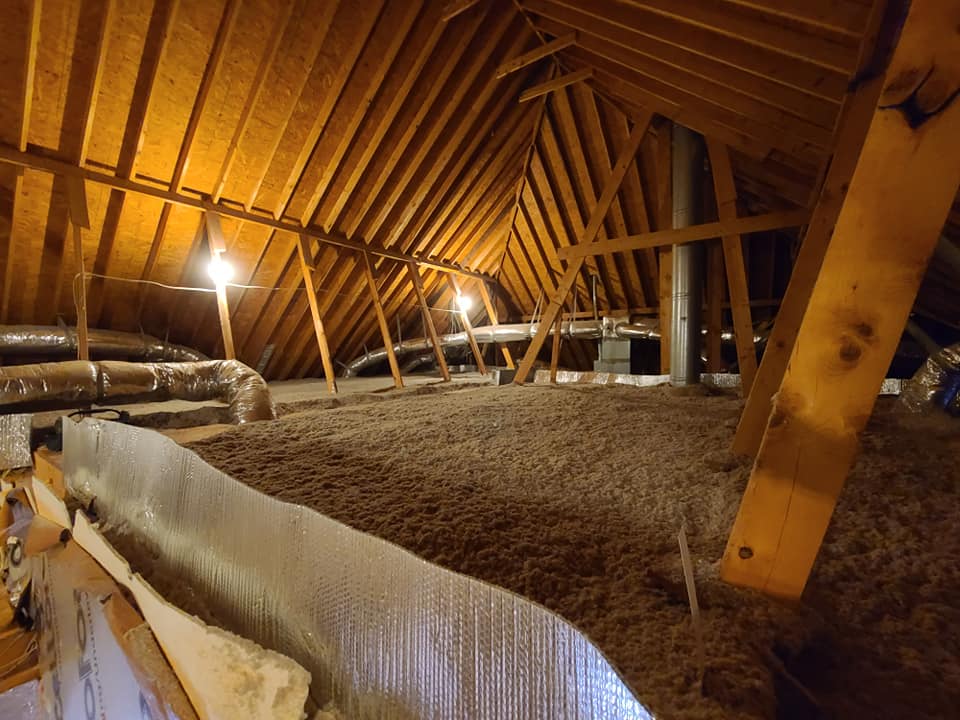Discover the Different Kinds Of Attic Insulation and Their Special Benefits for Your Home's Power Efficiency

Fiberglass Insulation
Fiberglass insulation is just one of the most generally used products for attic room insulation due to its outstanding thermal performance and cost-effectiveness. Made up of small glass fibers, this material effectively traps air, creating a shielding barrier that helps keep regular indoor temperatures. Its high R-value per inch makes it specifically reliable at resisting warmth transfer, which is vital for energy preservation in homes.
Installment of fiberglass insulation is fairly uncomplicated, usually available in batts or loose-fill kinds, accommodating various attic arrangements. Additionally, it is non-combustible and resistant to dampness, minimizing the danger of mold and mildew growth. This sturdiness adds to its longevity, making fiberglass a practical long-lasting financial investment for house owners.
Additionally, fiberglass insulation is frequently produced from recycled products, which enhances its eco-friendliness. The material can likewise add to soundproofing, lessening sound transfer between areas. While it is vital to use protective equipment during setup to stay clear of inflammation from the fibers, the total advantages of fiberglass insulation, consisting of energy cost savings and ecological factors to consider, make it a prominent choice for enhancing attic room efficiency and advertising a comfortable living atmosphere.
Spray Foam Insulation
Spray foam insulation is a very effective option for attic room insulation, known for its remarkable air sealing and thermal efficiency. This ingenious insulation product is made up of a combination of isocyanate and polyol material, which, when combined, broadens swiftly to load voids and cavities in the attic room area. Its ability to stick to different surfaces makes sure a continual obstacle against air leaks, significantly decreasing warmth loss during cooler months and warm gain throughout warmer seasons.
One of the key advantages of spray foam insulation is its high R-value per inch, which means it gives superb thermal resistance in a fairly thin application. This is particularly helpful in attic rooms where area is usually restricted. Additionally, spray foam can aid reduce wetness build-up, reducing the risk of mold and mildew and mold development, which can be damaging to both the structure and indoor air top quality.
While the initial expense of spray foam insulation might be more than standard alternatives, its long-term energy financial savings, combined with boosted convenience and boosted home worth, make it a worthwhile financial investment for house owners seeking improved energy effectiveness. Attic Insulation DFW. Overall, spray foam insulation stands out as a reliable option for enhancing attic room insulation
Cellulose Insulation
.jpg)
Cellulose insulation is a popular selection for attic insulation, mainly made up of recycled paper items treated with fire resistants. This eco-friendly our website alternative is understood for its excellent thermal performance, effectively reducing warmth transfer in both summer season and cold weather. The dense structure of cellulose allows it to fill voids and gaps in attic spaces, giving a seamless barrier versus air leakages.
One of the considerable benefits of cellulose insulation is its capacity to stand up to mold and mildew and pests, owing to the fire resistant therapies utilized during manufacturing. Additionally, it flaunts a high R-value per inch, which equates right into superior power effectiveness. House owners can anticipate reduced heating & cooling expenses as an outcome of improved insulation.
Installation is commonly achieved through blowing loosened cellulose right into the preferred area, allowing for a quick and effective procedure. This approach also minimizes disruption to the existing structure. Cellulose insulation read this article has a reasonably reduced ecological effect, as its production procedure utilizes recycled materials, adding to lasting structure methods.
Rock Wool Insulation
Amongst the numerous options for attic insulation, rock wool, likewise understood as mineral woollen, attracts attention due to its excellent thermal and acoustic efficiency. Made from recycled or natural products, rock wool is developed by melting rock and rotating it into fibers, leading to a product that provides superb insulation buildings.
Among the significant advantages of rock woollen insulation is its high R-value, which shows its performance in standing up to warm flow. This characteristic not only enhances energy effectiveness but also contributes to maintaining a comfortable indoor temperature year-round. In addition, rock wool is naturally fireproof, making it a more secure option for homes as it can withstand heats without melting or launching harmful fumes.
Additionally, rock woollen insulation succeeds in soundproofing capabilities, properly decreasing noise transmission between areas and from outdoors resources. Generally, rock wool insulation gives a comprehensive solution for improving power effectiveness, safety, and comfort in domestic settings.
Radiant Barrier Insulation
Glowing barrier insulation offers as an effective solution for minimizing warm transfer in attics, specifically in warmer climates. This type of insulation works by mirroring convected heat away from living areas, consequently decreasing the quantity of warm that goes into a home throughout heat - Attic Insulation DFW. Normally composed of a very reflective product, such as aluminum foil, radiant obstacles are mounted in attics, facing the roof, where they can intercept incoming heat from the sun
The primary advantage of glowing obstacle insulation is its capacity to lower air conditioning prices. By reflecting warmth instead than absorbing it, radiant barriers can aid keep a more stable interior temperature, minimizing the work on cooling systems. This effectiveness translates right into lower energy bills and increased comfort for homeowners.
Along with energy cost savings, radiant obstacles can likewise contribute to boosted interior air high quality. By minimizing warmth buildup, they help minimize moisture degrees, which look these up can stop mold growth and improve general air circulation. When mounted properly, glowing obstacle insulation can be an important addition to any kind of energy-efficient home, making it a deserving factor to consider for home owners aiming to improve their attic insulation approach.
Verdict
Finally, understanding the various sorts of attic insulation-- fiberglass, spray foam, cellulose, rock woollen, and radiant barriers-- allows homeowners to make enlightened choices concerning power efficiency. Each insulation kind provides unique benefits, such as superior thermal resistance, dampness administration, and audio attenuation. By picking the ideal insulation material, substantial reductions in energy prices can be accomplished, along with improvements in interior comfort. Inevitably, the appropriate option contributes to a more sustainable living environment and promotes total power conservation.

In final thought, understanding the different types of attic room insulation-- fiberglass, spray foam, cellulose, rock wool, and glowing obstacles-- allows homeowners to make enlightened decisions regarding power effectiveness.